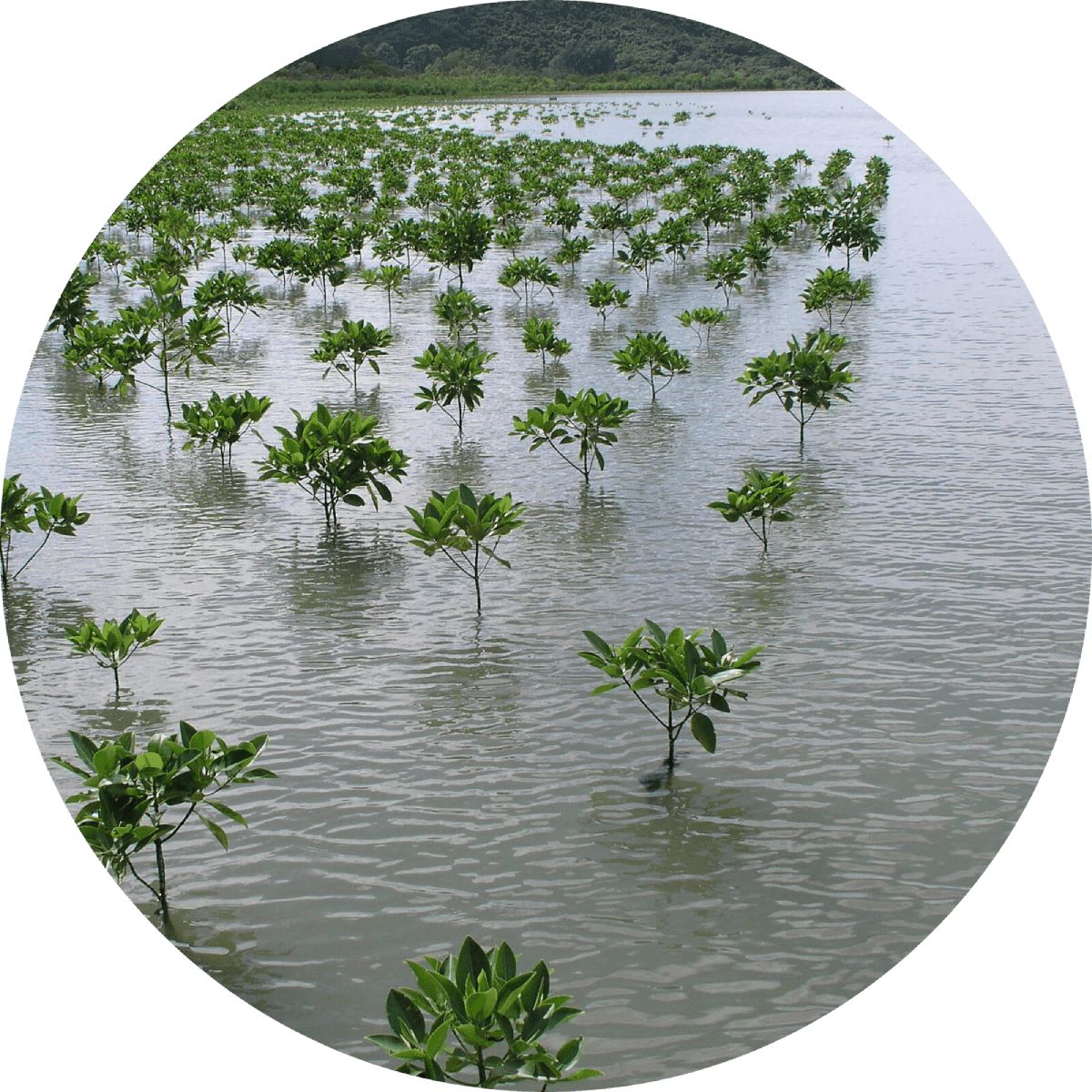Environmenal activist group Columbia Riverkeepers reach a settlement with Weyerhauser, one of the world's largest timber firms. The Riverkeepers claim the mill has been discharging harmful levels of run-off into the Columbia river, which hurt hurt oxygens levels for fish and can spur the growth of harmful bacteria. Weyerhaeuser has agreed to make changes to reroute run-off and better monitor on-site procedures. They will also be fined for every instance of future pollution between 2023 and 2025 if approved by the U.S. Department of Justice. "Weyerhaeuser is a huge company, and to see an agreement of this magnitude with this type of penalty really shows that no corporation has the right to flout the law and pollute this river," said Simone Anter, a staff attorney with Columbia Riverkeeper.
"The Columbia River basin will see an increase in flooding over the next 50 years as a result of climate change. . . The Willamette River and its tributaries are expected to see the biggest increase in flooding magnitude, with 50% to 60% increases in 100-year floods. The streamflows are expected to be smaller downstream and grow larger upstream. . . Parts of the Snake River will see a 40% increase in 10-year floods and a 60% increase in 100-year floods. . . The model also suggests a significant increase in the flood season on the Snake River, which is largely concentrated in late spring now but could start as early as December or January in the future [according to researchers]. One of the drivers of the change is warmer winters that will see precipitation fall more as rain instead of snow. Lower spring snowpack will lead to earlier spring streamflows in many rivers."
"The U.S. Fish and Wildlife Service, are establishing a nonessential experimental population of the California condor to the Pacific Northwest. . . The best available data indicate that reintroduction of the California condor into the Pacific Northwest is biologically feasible and will promote the conservation of the species. . . California condor population decline and range contractions were concurrent with Euro-American settlement of the West, with condors disappearing from the Pacific Northwest in early 1900s. . . Ten potential release sites were identified by the Yurok Tribe, and the proposed release site [Bald Hills of Redwoods National Park] was selected following careful consideration. . . The Service, NPS, and the Yurok Tribe will plan and manage the reintroduction of California condors as Redwood National Park."
"18,360 adult coho had been counted passing Lower Granite Dam on the Snake River. That is a modern-day record for the dam, surpassing the previous high posted in 2014. . . In 1996, about a decade after coho were declared extirpated, the [Nez Perce] tribe began an effort to restore the run using hatchery stock taken from the lower Columbia River. Progress was slow but in 2014, the run surged with a return of 18,098, enough for the first tribal and nontribal fishing season in many decades. . . Coho once thrived in the Snake River basin with an estimated annual return of about 200,000 fish. . . The tribe releases about 1.5 million coho smolts in places like Lapwai and Clear creeks on the Clearwater River and more recently in northeastern Oregon’s Lostine River. . . The tribe supports breaching the four lower Snake River dams as the best tool available to boost fish survival and ultimately recover the wild runs."
Eagle Creek Fire burns 48,861 acres affecting 20 state parks and many miles of trails. "Fire is a natural phenomenon, even in the wet West Cascades forests, and therefore the forest ecosystem has natural processes for regenerating. The fire interval in the West Cascades can vary from 100-400 year intervals. . . Most of the fire perimeter was located within the Mark O. Hatfield Wilderness area, so USFS policy is to 'Allow reforestation only if a loss of the wilderness resource, due to human influence, has occurred and there is no reasonable expectation of natural reforestation.' Due to this, there will not be a widespread replanting of the burned area; however there will be early detection and rapid response efforts in place to prevent invasive species from becoming established. USFS has also been putting in place erosion control measures to protect Chinook, coho, and steelhead."
“More than 600,000 sockeye salmon have leapt Bonneville Dam's fish ladders on the lower Columbia River – most heading to the Okanagan River in north central Washington. And scientists continue to expect a huge fall Chinook run as well, perhaps equaling last year's 1.27 million record. Most of these fish, however, aren't part of any endangered fish runs. But the rise in the Redfish Lake sockeye, plus the return of a few thousand imperiled Chinook also heading up the Snake River, is giving scientists, hydropower managers and tribal leaders fresh hope that progress toward recovery is finally being made after decades of divisive litigation.”
"PacifiCorp agreed to transfer ownership of the surrounding land as part of a decommissioning settlement [referring to the removal of the Powerdale Dam in 2010] with the Federal Energy Regulatory Commission. The county and Columbia Land Trust acquired the [400 acre] property at no direct cost. . . The land trust’s main goal in securing the land, protecting and enhancing fish and wildlife habitat along the natural corridor. The organization will also strive to maintain existing recreational uses on the river, potentially enhancing future uses, and respecting tribal rights. . ."
“Climate change in the Columbia Basin will increasingly disrupt existing patterns of precipitation and runoff as time wears on, with dramatic impacts on the aquatic environment and dependent human activities. . . "As summarized by the U.S. Global Change Research Program: ‘In areas where snowpack dominates, the timing of runoff will continue to shift to earlier in the spring and flows will be lower in late summer,' placing ‘additional burdens on already stressed water systems." The cascading effects of regional climate change may be summarized as follows. Mean annual temperatures will increase, Basin-wide, by 6-7°F by the 2090s. Hence, precipitation in the mountains of the Columbia basin will increasingly fall as rain rather than snow. As a result, snowpack accumulation will decrease. Glaciers will melt, providing a ‘one-time' bonus supply of water that will eventually disappear, permanently reducing flow in glacier-dependent rivers. Hotter weather will lead to increased evapotranspiration from plants and reduced soil moisture, thus increasing water demand at the time when it is least available.”
"In 2012, Oregon completed designation of five marine reserve sites within its state waters. Each site consists of a "no-take" marine reserve and most also include one or more, less restrictive Marine Protected Areas. The marine reserves prohibit all take of fish, invertebrates, wildlife and seaweeds as well as ocean development, except as necessary for monitoring or research. The protected areas have varying levels of protection, allowing or prohibiting specific take and prohibiting all ocean development." The protected areas: Redfish Rocks, Otter Rock, Cape Perpetua, Cascade Head and Cape Falcon.
The four dams on the lower Snake River were constructed primarily as navigation locks in the 60s and 70s. They disrupt migration to and from some of the healthiest habitat remaining in the Columbia river watershed. “The lower Snake river dams takes things into a whole different dimension. By simply removing these four cold-war conceived dams on the lower snake, you have done what these heroes have done on these small watersheds [referring the removal of other small dams on the Columbia], to 5,500 miles of beautiful wilderness streams that could literally support millions of salmon. It's so simple. It's just simple. If the four lower Snake river dams were removed it would the largest wild salmon recovery project that is workable on earth at a time when the oceans are in crisis.”
A wolf pack with pups is confirmed in Northeast Oregon, the first evidence of multiple wolves in Oregon since wolves were eliminated in the 1960s.
"A wolf pack that includes both adults and pups was confirmed in a forested area of northern Union County. . . the first evidence of multiple wolves and wolf reproduction in Oregon since wolves were extirpated from the state back in the mid-1940s. . . Experts have long predicted that wolves from the expanding Idaho population would continue to cross the Snake River and enter Oregon."
“Today, as the wind listens to its endless tale, the boisterous voice of the river is reduced to a small rhythm of sorrow, a heart pulsing with a long-forgotten purpose in waves that curl around a rubble of smooth stones. Geese fly over on dark wings, shadows drift and sail like the spirit of what is lost.”
“The harsh winter is past. The rains and snow have come and gone. The flowers, the willow trees have begun to bud, and soon the appearance of the Indian plant food seeds will germinate by the warmth of God's sunshine. Quails scamper for their food on the barren winter ground, and birds have begun to sing their melodious welcome to the sunshine. Woodpeckers chatter away on the decayed trees to make a nest for their soon-to-arrive young, and bald eagles perch themselves on the highest tips of the budding cottonwood trees, scouting for food. Squirrels and groundhogs lazily creep out of their winter abodes, and crayfish awaken to the growing warmth of the waters. Magpies sometimes can be found eulogizing a fallen comrade. The bellies of the trout and salmon have begun to swell with eggs. This is God's timetable for them to propagate, to be fruitful and multiply. Stems of flowers, plants, and trees will soon bend in reverence to the rays of the sun.”


Learn about Maya Lin’s fifth and final memorial: a multi-platform science based artwork that presents an ecological history of our world - past, present, and future.

Discover ecological histories and stories of former abundance, loss, and recovery on the map of memory.

Learn how we can reduce our emissions and protect and restore species and habitats – around the world.

See how art can help us rethink the problems we face, and give us hope that each one of us can make a difference.

Help make a global memorial something personal and close to home. Share your stories of the natural world.